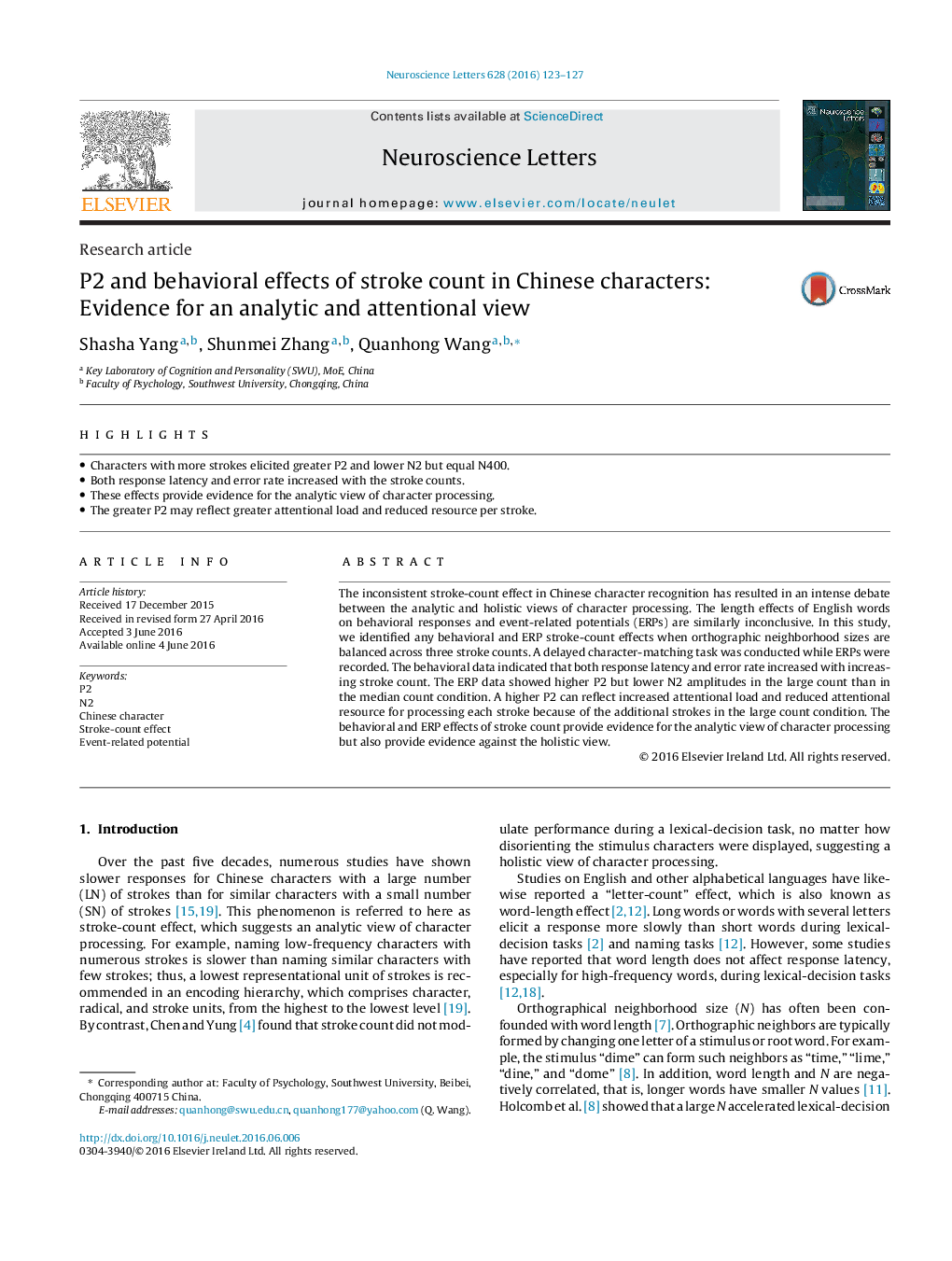| Article ID | Journal | Published Year | Pages | File Type |
|---|---|---|---|---|
| 6279371 | Neuroscience Letters | 2016 | 5 Pages |
Abstract
The inconsistent stroke-count effect in Chinese character recognition has resulted in an intense debate between the analytic and holistic views of character processing. The length effects of English words on behavioral responses and event-related potentials (ERPs) are similarly inconclusive. In this study, we identified any behavioral and ERP stroke-count effects when orthographic neighborhood sizes are balanced across three stroke counts. A delayed character-matching task was conducted while ERPs were recorded. The behavioral data indicated that both response latency and error rate increased with increasing stroke count. The ERP data showed higher P2 but lower N2 amplitudes in the large count than in the median count condition. A higher P2 can reflect increased attentional load and reduced attentional resource for processing each stroke because of the additional strokes in the large count condition. The behavioral and ERP effects of stroke count provide evidence for the analytic view of character processing but also provide evidence against the holistic view.
Related Topics
Life Sciences
Neuroscience
Neuroscience (General)
Authors
Shasha Yang, Shunmei Zhang, Quanhong Wang,
